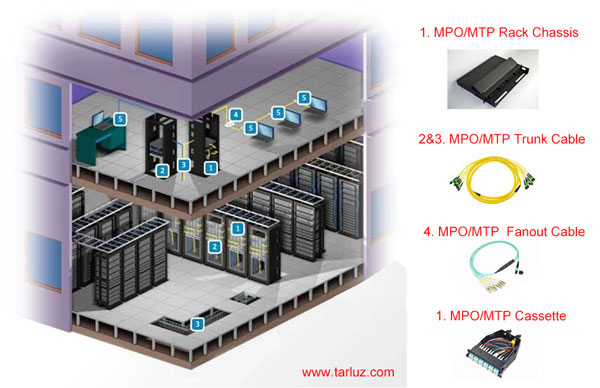 Data centers are comprised of a high speed, high demand networking communication systems capable of handling the traffic for Storage Area Networks (SAN), Network Attached Storage (NAS), file/ application/web server farms, and other components located in the controlled environment. The control of the environment relates to humidity, flood, electrical, temperature, fire controls, and of course, physical access. Communication in and out of the data center is provided by WAN (Wide Area Network), CAN/MAN (Metro Area Network) and LAN (Local Area Network) links in a variety of configurations depending upon the needs of the particular center. A properly designed data center will provide availability, accessibility, scalability, and reliability 24 hours a day, 7 days a week, 365 days per year minus any scheduled downtime for maintenance. Telephone companies work for 99.999% uptime and the data center is no different. There are two basic types of data centers: corporate and institutional data centers (CDCs) and Internet Data Centers (IDCs). CDCs are maintained and operated from within the corporation, while IDCs are operated by Internet Service Providers (ISPs). The ISPs provide third-party websites, collocation facilities and other data services for companies such as outsourced email. Critical data centers are monitored by a NOC (Network Operations Center) which may be in-house or outsourced to a third party. The NOC is the first place outages are realized and the starting point for corrective action. NOCs are generally staffed during the data center’s hours of operations. In 24 x 7 data centers, the NOC is an around the clock department. Equipment monitoring devices will advise the NOC of problems such as overheating, equipment outages, and component failure via a set of triggers that can be configured on the equipment or via a third party monitoring software which can run over all of the equipment.
Data centers are comprised of a high speed, high demand networking communication systems capable of handling the traffic for Storage Area Networks (SAN), Network Attached Storage (NAS), file/ application/web server farms, and other components located in the controlled environment. The control of the environment relates to humidity, flood, electrical, temperature, fire controls, and of course, physical access. Communication in and out of the data center is provided by WAN (Wide Area Network), CAN/MAN (Metro Area Network) and LAN (Local Area Network) links in a variety of configurations depending upon the needs of the particular center. A properly designed data center will provide availability, accessibility, scalability, and reliability 24 hours a day, 7 days a week, 365 days per year minus any scheduled downtime for maintenance. Telephone companies work for 99.999% uptime and the data center is no different. There are two basic types of data centers: corporate and institutional data centers (CDCs) and Internet Data Centers (IDCs). CDCs are maintained and operated from within the corporation, while IDCs are operated by Internet Service Providers (ISPs). The ISPs provide third-party websites, collocation facilities and other data services for companies such as outsourced email. Critical data centers are monitored by a NOC (Network Operations Center) which may be in-house or outsourced to a third party. The NOC is the first place outages are realized and the starting point for corrective action. NOCs are generally staffed during the data center’s hours of operations. In 24 x 7 data centers, the NOC is an around the clock department. Equipment monitoring devices will advise the NOC of problems such as overheating, equipment outages, and component failure via a set of triggers that can be configured on the equipment or via a third party monitoring software which can run over all of the equipment.